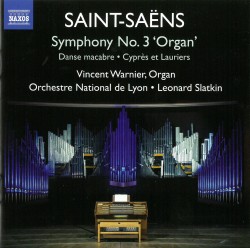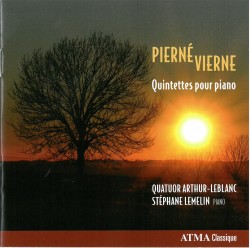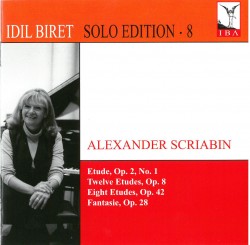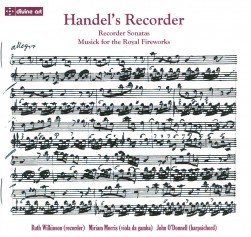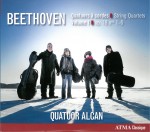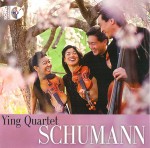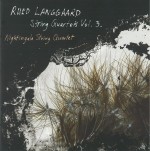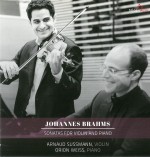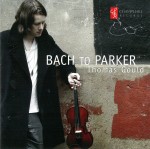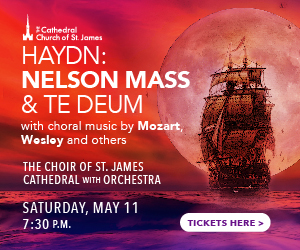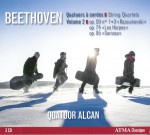 The complete cycle of Beethoven String Quartets with which the Quatuor Alcan is celebrating their 25th anniversary continues with Volume 2, a 3-CD set featuring the five works that have come to be known as the middle quartets: the Razumovsky quartets Op.59, Nos.1-3; Op.74, The Harp; and Op.95, Quartetto serioso (ATMA Classique ACD2 2492).
The complete cycle of Beethoven String Quartets with which the Quatuor Alcan is celebrating their 25th anniversary continues with Volume 2, a 3-CD set featuring the five works that have come to be known as the middle quartets: the Razumovsky quartets Op.59, Nos.1-3; Op.74, The Harp; and Op.95, Quartetto serioso (ATMA Classique ACD2 2492).
The high standard set by Volume 1, reviewed in this column last issue, continues here. As with that set, these works were recorded several years ago, between May 2008 and December 2011, but the fact that all the recordings were made at the excellent Salle Françoys-Bernier at Le Domaine Forget in Saint-Irénée in Quebec means that there is no discernable difference in the recorded sound.
Given the quality of the first two sets, I can’t wait to hear what the ensemble does with the late quartets in the final volume, scheduled for release in April.
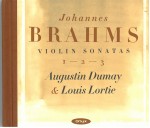 There’s yet another beautiful CD of the three Brahms Violin Sonatas, this time featuring the French violinist Augustin Dumay and Canadian pianist Louis Lortie (Onyx 4133).
There’s yet another beautiful CD of the three Brahms Violin Sonatas, this time featuring the French violinist Augustin Dumay and Canadian pianist Louis Lortie (Onyx 4133).
The playing here is perfectly judged. Nothing is ever rushed, but nothing ever seems to drag either; there is plenty of forward impetus when needed and a natural flow to the music that is helped by the expansive phrasing and the beautifully judged dynamics.
Dumay plays with his heart on his sleeve to some degree, with a big tone and a judicial use of portamento, but his playing – and Lortie’s too, for that matter – is always underpinned by great thought, intelligence and perception.
The Scherzo in C Minor, Brahms’ contribution to the collaborative F-A-E Sonata that he, Robert Schumann and Albert Dietrich wrote for Joseph Joachim, rounds out a simply lovely CD.
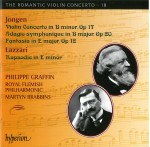 Hyperion’s outstanding series The Romantic Violin Concerto reaches Volume 18 with major works by the Belgian composer Joseph Jongen (1873-1953), in terrific performances by Philippe Graffin and the Royal Flemish Philharmonic under Martyn Brabbins (CDA68005).
Hyperion’s outstanding series The Romantic Violin Concerto reaches Volume 18 with major works by the Belgian composer Joseph Jongen (1873-1953), in terrific performances by Philippe Graffin and the Royal Flemish Philharmonic under Martyn Brabbins (CDA68005).
The three works here – the Fantasia in E Major Op.12, the Adagio symphonique in B Major Op.20 and the Violin Concerto in B Minor Op.17 – were all written within a three-year period around the turn of the last century, when Jongen was still in his 20s. All are beautifully crafted Romantic works, with the concerto in particular a major composition with a quite beautiful slow movement.
Also included is the Rapsodie in E Minor by Jongen’s contemporary Sylvio Lazzari (1857-1944). Although born in Italy, Lazzari lived in France for most of his life and was influenced by Gounod, Franck and Chausson as well as by Wagner. His music has remained mostly unperformed since his death, but if this beautiful Rapsodie is anything to go by, then we’ve all been really missing something.
Graffin is, as usual, superb in every respect throughout the CD, with a luscious tone, expansive and nuanced phrasing, and sensitivity and passion to burn. He is given terrific support by Brabbins and the orchestra.
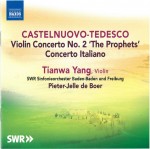 The outstanding Chinese violinist Tianwa Yang adds to her already highly impressive Naxos discography with a new CD of the two Violin Concertos by Mario Castelnuovo-Tedesco (8.573135). Pieter-Jelle de Boer conducts the SWR Sinfonieorchester Baden Baden und Freiburg.
The outstanding Chinese violinist Tianwa Yang adds to her already highly impressive Naxos discography with a new CD of the two Violin Concertos by Mario Castelnuovo-Tedesco (8.573135). Pieter-Jelle de Boer conducts the SWR Sinfonieorchester Baden Baden und Freiburg.
It’s always interesting to hear rarely performed 20th-century violin concertos, and it’s a pretty safe bet that you won’t know the Concerto Italiano Op.31 at all – it’s a world premiere recording. Written in 1924, it looks back to the violin styles of the 17th and 18th centuries, and was considered by the composer to be his first truly symphonic work. Jascha Heifetz really liked it and after performing it in Paris in 1927 and in New York in 1931 he asked Castelnuovo-Tedesco to write a new concerto for him.
The resulting work, the Violin Concerto No.2 ‘The Prophets,’ Op.66, is certainly completely different. In 1925 the composer had discovered a notebook in which his grandfather had notated the music for some Hebrew prayers; the discovery had a deep emotional effect on him and led to his writing several works that celebrated his Jewish heritage. The concerto is one of these and uses traditional Jewish melodies in an orchestral setting that has more than a hint of the Hollywood movie scores that Castelnuovo-Tedesco would produce after moving to California some ten years later.
Heifetz, who gave the premiere in 1933 and also recorded the concerto, really liked it, but commented that apparently “no-one else did.” I’m with Heifetz.
Strings Attached continues at thewholenote.com with guitar concertos by Torroba (Pepe Romero and Vicente Coves), string quartets by Ruperto Chapí (Cuarteto Latinamericano) and works by Piazzolla arranged for violin and harp (Ann Hopson Pilot and Lucia Lin).
If you were asked to name a Spanish composer who lived through almost all of the 20th century, was over 90 when he died and wrote several guitar concertos, chances are you would name Joaquín Rodrigo (1901-1999), but Federico Moreno Torroba (1891-1982) was an exact contemporary who wrote ten guitar concertos of his own.
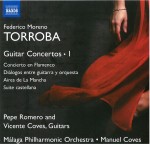 Naxos has issued Volume 1 of the Torroba Guitar Concertos, featuring guitarists Pepe Romero and Vicente Coves and the Málaga Philharmonic Orchestra under Manuel Coves (8.573255). Romero is the soloist in the world premiere recording of the Concierto en Flamenco, written in 1962 for the virtuoso flamenco guitarist Sabicas. Romero’s technical and musical mastery of both the flamenco and classical guitar styles make him an ideal interpreter. Coves is the featured soloist in the Diálogos entre guitarra y Orquesta, which was originally written for Andrés Segovia in the early 1960s but was subsequently revised and premiered in 1977. Pepe Romero recorded it in 1980. Since Coves is described in the booklet notes as having been a disciple of Romero’s for the best part of the last 20 years his performance clearly has the stamp of authenticity. Both works are pleasant and entertaining – the Diálogos in particular has a beautiful Andante movement – but neither makes as strong a first impression as the more popular Rodrigo concertos, which may partly account for their being less well known.
Naxos has issued Volume 1 of the Torroba Guitar Concertos, featuring guitarists Pepe Romero and Vicente Coves and the Málaga Philharmonic Orchestra under Manuel Coves (8.573255). Romero is the soloist in the world premiere recording of the Concierto en Flamenco, written in 1962 for the virtuoso flamenco guitarist Sabicas. Romero’s technical and musical mastery of both the flamenco and classical guitar styles make him an ideal interpreter. Coves is the featured soloist in the Diálogos entre guitarra y Orquesta, which was originally written for Andrés Segovia in the early 1960s but was subsequently revised and premiered in 1977. Pepe Romero recorded it in 1980. Since Coves is described in the booklet notes as having been a disciple of Romero’s for the best part of the last 20 years his performance clearly has the stamp of authenticity. Both works are pleasant and entertaining – the Diálogos in particular has a beautiful Andante movement – but neither makes as strong a first impression as the more popular Rodrigo concertos, which may partly account for their being less well known.
This Naxos CD is the first of three volumes of Torroba’s complete works for guitar and orchestra. As there are ten concertos to cover, the inclusion of two fairly substantial solo guitar works here is somewhat surprising. Again, the two soloists share the spotlight, with Romero the soloist in the five-movement suite Aires de La Mancha and Coves performing the three-movement Suite castellana, which includes Torroba’s first-ever composition for the guitar. Both works were the result of the composer’s collaboration with Segovia.
This seems to be a good month for works you’re not likely to hear that often, or even to know at all.
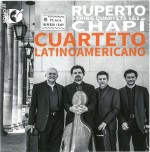 Ruperto Chapí (1851-1909) is a new name to me, and his String Quartets 1 & 2 are available on a new Sono Luminus CD in performances by the Cuarteto Latinoamericano (DSL-92185).
Ruperto Chapí (1851-1909) is a new name to me, and his String Quartets 1 & 2 are available on a new Sono Luminus CD in performances by the Cuarteto Latinoamericano (DSL-92185).
Chapí was a Spanish composer famous in his native country for his zarzuelas, the popular Spanish opera form, and he didn’t turn to chamber music until the last decade of his life, starting work on a series of four string quartets in 1903.
There certainly wasn’t much of a Spanish quartet tradition to follow. Little had been written since the three quartets of Juan Arriaga, who died just short of his 20th birthday in 1826, but the formation of the Cuarteto Francés ensemble in Madrid in 1901 kick-started the composition of string quartets by a number of local composers, Chapí among them. His first quartet was dedicated to the Cuarteto Francés.
Chapí had a thorough knowledge of the European masters, but his quartets are essentially portraits of Spain using the rhythms and colours of Spanish folk music. They are charming and effective works, and while the booklet notes mention references to Tchaikovsky and Grieg their mostly warm and sunny nature seems to me to be more reminiscent of Borodin’s D-Major Second Quartet.
The Cuarteto Latinoamericano are in their element here; you couldn’t ask for better performances.
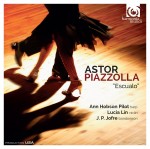 Escualo is the title of a lovely new CD of the music of Astor Piazzolla, with violinist Ann Hobson Pilot and harpist Lucia Lin supported on selected tracks by J.P. Jofre on the bandoneón (harmonia mundi 907627).
Escualo is the title of a lovely new CD of the music of Astor Piazzolla, with violinist Ann Hobson Pilot and harpist Lucia Lin supported on selected tracks by J.P. Jofre on the bandoneón (harmonia mundi 907627).
Piazzolla’s nuevo tango music, which fused the traditional Argentine tango with jazz and classical elements, has become extremely popular over the past few decades, and the arrangements here work very well. There are two instrumental solos – Chiquillin de Bachin for harp and Tango-Étude III for violin – and two duets for violin and harp – Valsísimo and the four-movement suite Histoire du Tango. The only disappointment for me is the fact that the bandoneón only appears in the two remaining works: the three-movement Angel Suite and the title track. It’s a real pity, because the instrument’s distinctive sound adds such an air of authenticity to the music and takes it to a quite different level.
Pilot’s playing is clean and idiomatic, albeit perhaps a little restrained at times, but no matter – it’s always a delight to listen to, and she clearly understands the heart of this music.
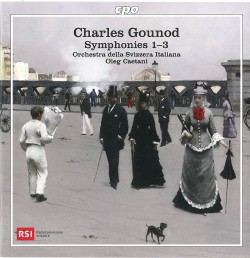 Gounod – Symphonies 1-3
Gounod – Symphonies 1-3

